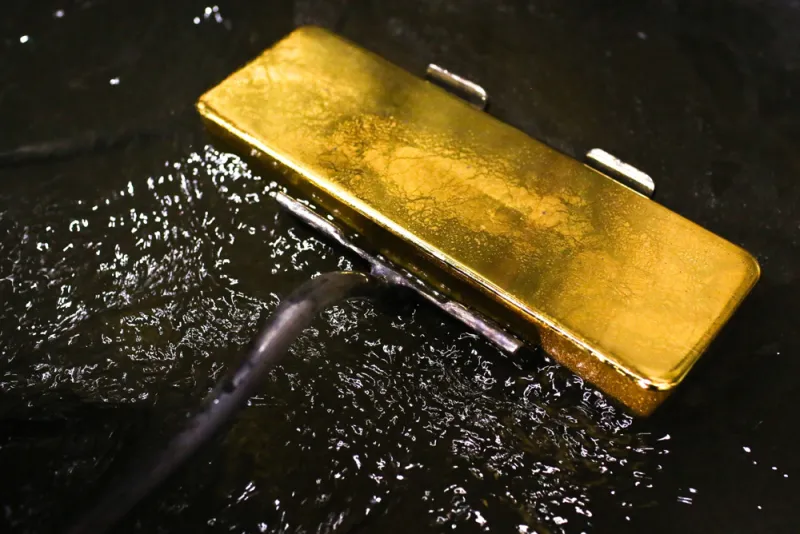Gold has been rallying for more than a year, as investors have sought refuge from a growing U.S.-China trade war and fears this week of the economic effects of the spreading coronavirus.
Despite the recent outperformance, the long dry spell tested the fortitude of the small number of asset managers dedicated to the commodity, including Sprott, which has $11.3 billion in precious metals and mining investments.
Gold returned almost nothing between 2011 and 2019. For the ten years from December 1999 through December 2010, however, it gained 15.6 percent annually on average. Looking over the 20 years from the end of December 1999 to December 2019, the average annual return of gold (as measured by a standard futures contract called GOLD Comdty) was 8.66 percent. Recent good news for the metal was reflected in 2019 as well when gold returned 18.31 percent, compared to bonds’ return of 8.72 percent as measured by the Bloomberg Barclays US Aggregate Bond Index.
“We were willing to be contrarian and patient. But [the years between] 2011 and 2018 were really tough, as clients gave up on gold,” said Sprott CEO Peter Grosskopf, who runs the publicly traded investment shop based in Toronto, in an interview. “Central banks were resuscitating markets and nobody felt they needed to have gold.” Sprott sells a variety of products and services, including physical bullion trusts, gold-mining exchange-traded funds, precious metal equity strategies, lending, and wealth management.
Given the rally, investors have warmed up to the asset recently. Flows into gold ETFs grew 14 percent in 2019 and reached all-time highs.
[II Deep Dive: What’s Worrying Paul Tudor Jones]
Specialist managers need deep pockets and a strategy to remain focused on the ins and outs of their niches, while also surviving the lean years, experts said. Gold and gold stocks do well over a complete market cycle, but can often suffer from steep falls in between, scaring away investors and posing financial challenges to asset managers.
The benefit, however, can be fewer competitors. Although a broad range of managers offer gold funds, such as VanEck and First Eagle Investment Management, only a few work solely in the category.
During the most recent tough years, Sprott, bought up rivals and hired away their talent.
In January, Toronto-based Sprott rebuilt its equity franchise via the acquisition of Tocqueville’s gold equities asset management business. Sprott gained $1.8 billion in institutional and retail assets, including the Tocqueville Gold Fund. Tocqueville’s legendary gold manager John Hathaway and Sprott president Whitney George had been talking for more than a year before forming a joint venture last February to co-manage a precious metals mining strategy.
But in 2017, Sprott had sold its entire diversified funds business to focus on gold, raise cash, and protect its balance sheet.
“That was a gut-checking decision because there were stable cash flows in those diversified funds, many of which were private credit,” said Grosskopf. “We didn’t get a huge price for them, but did what we thought we could to be the best at gold.”
Many large funds have been shut down or reorganized over the last few years. Just two examples are First State Investments shutting down its global natural resources fund, while Vanguard restructured its Precious Metals and Mining Fund in 2018 to be a more broadly diversified fund that invests in commodities-oriented industries.
“People thought we were crazy to think we could build a whole firm on gold. They thought we were crazy old gold bugs, although a lot of people still have that view,” said Grosskopf. “But we had enough familiarity to know that was dead wrong.”
The investable gold universe is valued at about $3.4 trillion, with most in bullion. In addition, most funds are passive, with only a few asset managers actively picking stocks. “That creates a lot of dislocation and we didn’t think you could go about that without an active team of real experts. We kept building and hiring as everybody was letting people go,” Grosskopf went on.
Even though Sprott limits itself to precious metals, it has diversified itself in other ways, including lending money to gold companies as they build their next mine — and sharing in the upside. The strategy performed well, even when the funds did not. “It gave us something that we could go to institutions with and say give this sector a try. It’s more conservative than equity,’” said Grosskopf. “We told all of our portfolio managers that the gold market will go up and down, but you need to deliver performance even in a flat gold-price environment.”
Sprott argued that the metal deserves a permanent place in portfolios, while saying that gold equities present a tactical opportunity right now. Since the peak in 2011, gold mining companies have declined about 70 percent. In similar periods, these stocks have rebounded and significantly outperformed the broader market.
“Gold is like a religion,” said Grosskopf. “It’s a very strange area because everyone has a preconceived notion about gold: it’s volatile, it’s a relic, it doesn’t pay interest, it’s not liquid. Almost all of those notions are incorrect. It’s a hugely liquid and deep market that acts as a counterweight to confidence. The more confidence in the market, the weaker gold is. But it’s slowly winning sophisticated users like pensions, endowments, and family offices.”







